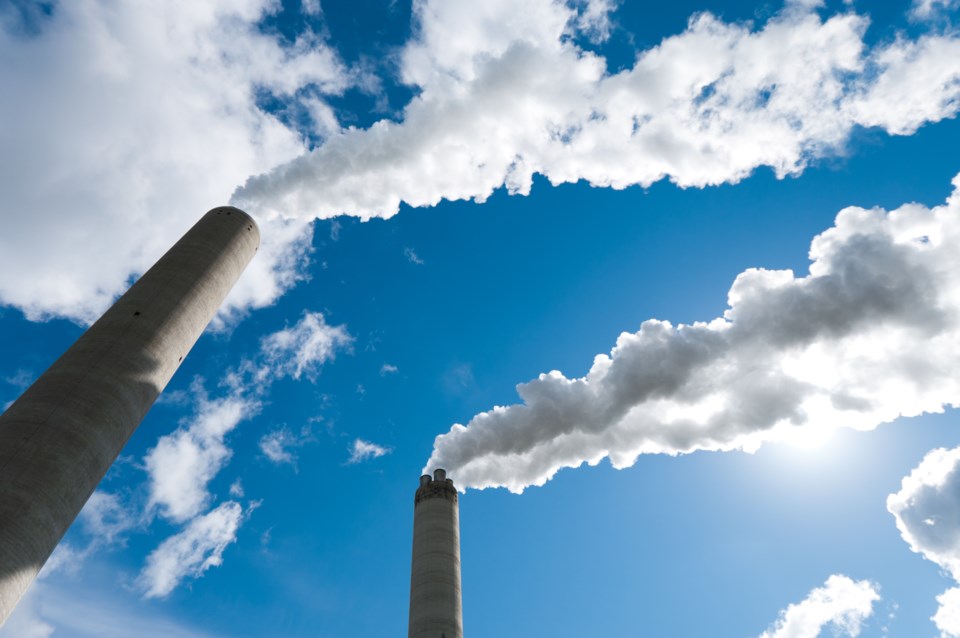Editor's note: This story was originally published by Colorado Newsline. Read the original story here.
***
Nearly everyone in Colorado’s environmental policy world agrees that there’s an urgent need for the state to bring its greenhouse gas emissions in line with the goals set by lawmakers 18 months ago. But as regulators prepare to undertake a series of critical rulemaking processes in 2021, they’re still at odds over exactly how to get there — and what, if any, enforcement mechanisms to put in place to ensure the state remains on track.
In a formal request submitted to Colorado’s Air Quality Control Commission on Dec. 22, advocates at the Environmental Defense Fund made their latest pitch to state climate officials, proposing new rules that would set statewide greenhouse gas “allowances” for various types of polluters. Consistent with Colorado’s landmark 2019 climate law, House Bill 19-1261, allowances would decline over time to meet the state’s emissions targets — beginning with a 26% cut from 2005 levels by 2025, and a 50% cut by 2030.
Beginning in 2022, the comprehensive emissions program envisioned by EDF would set an annual budget allocating allowances across different sectors, from electricity and natural gas suppliers to oil refineries and other industrial sources. Regulators at the Colorado Department of Public Health and Environment would allocate allowances based on guidance from a new, 13-member Colorado Climate Board made up of state officials and representatives of impacted communities. Violators of emissions limits would be subject to penalties of up to $47,357 per ton per day.
Environmental groups hailed the EDF’s rulemaking request, which followed a separate proposal submitted by Boulder-based Western Resource Advocates earlier last year. Both proposals aim to ensure compliance with HB-1261’s goals by setting strict, enforceable limits to close Colorado’s “emissions gap.”
“For months we have been clear that we expect the AQCC to adopt policies that are equitable, verifiable and enforceable,” Katie Belgard, government affairs director for Conservation Colorado, said in a statement. “Unfortunately, the actions taken by the AQCC are not enough and our state is off track to meet its climate commitments … The proposals submitted by EDF and WRA represent ambitious options that deserve to be evaluated by the AQCC through a stakeholder process.”
The emissions-capping proposals differ, however, from the approach endorsed by Gov. Jared Polis’ administration since lawmakers passed HB-1261 in May 2019. In an op-ed last year in The Pueblo Chieftain, Polis dismissed cap-and-trade as “unworkable” at the state level, arguing that climate change ”can’t be solved by just adopting a singular rule or edict by the state.”
Steep emissions cuts needed
Colorado’s greenhouse gas emissions have fallen slightly since peaking around 2010, but remain well above the targets set by HB-1261, according to the most recent estimates from CDPHE’s Air Pollution Control Division. The modest downward trend in emissions has been driven largely by the adoption of clean energy in the electricity generation sector, while emissions from other sources, including transportation and buildings, have continued to rise.
APCD spokesperson Andrew Bare confirmed that the division had received EDF’s proposal, which the AQCC is expected to consider at its February meeting.
“We are still in the process of reviewing the proposal and the supporting documents, so we are unable to speak further on the proposal,” Bare said.
“We thought it could be an important way to catalyze a conversation,” Pam Kiely, EDF’s senior director of regulatory strategy, told Newsline in an interview. “And to help demonstrate the possibility that there is out there, with a broader set of policy tools, and really try to set the bar for what implementation of 1261 might look like.”
Despite pressure from environmental advocates and even top HB-1261 sponsors like outgoing Colorado House Speaker KC Becker, state officials have rejected the groups’ interpretation of the law. Regulators have presented AQCC commissioners with a tentative schedule that includes a major rulemaking on transportation emissions in mid-2021, with another on building emissions to follow later in the year.
Administration officials argue that this sector-by-sector approach to climate regulation is the best way to make progress toward the state’s new emissions goals. Advocates at EDF, WRA and other groups say they’re happy to pursue sector-specific policies, but some worry regulators are too reluctant to impose any kind of enforceable emissions limits.
“There’s real advantages to thinking about how to tie sectors together, but for us, that’s not the key issue here,” Kiely said. “I think the key issue is whether the state is evaluating a framework that has the ability to actually limit pollution over time, at the pace and scale necessary. We’re as open to talking about sector-based limits as we are to talk about multi-sector, economy-wide limits.”
With key rulemakings looming at the AQCC over the coming year, few such regulations have actively been proposed by state officials. An emissions “roadmap” by the Colorado Energy Office, outlining a path towards the HB-1261 targets, is set to be finalized this month, but environmental groups were disappointed with the lack of concrete new regulatory proposals contained in a draft version of the document released late last year.
Regulators at the APCD, however, say that their careful approach to developing state emissions policies is part of their commitment to “taking a leadership role” in confronting climate change.
“That means moving quickly and ambitiously, but also taking the time to identify policies that are feasible, effective and scientifically supported,” Bare said. “Our strategies must do more than just reduce emissions — they must protect the reliability and affordability of our energy system, ensure Colorado maintains a firm economic foundation and effect a just transition to a clean energy economy that leaves behind no communities in our diverse state.”
Colorado Newsline is part of States Newsroom, a network of news outlets supported by grants and a coalition of donors as a 501c(3) public charity. Colorado Newsline maintains editorial independence. Contact Editor Quentin Young for questions: [email protected]. Follow Colorado Newsline on Facebook and Twitter.


.jpg;w=120;h=80;mode=crop)
